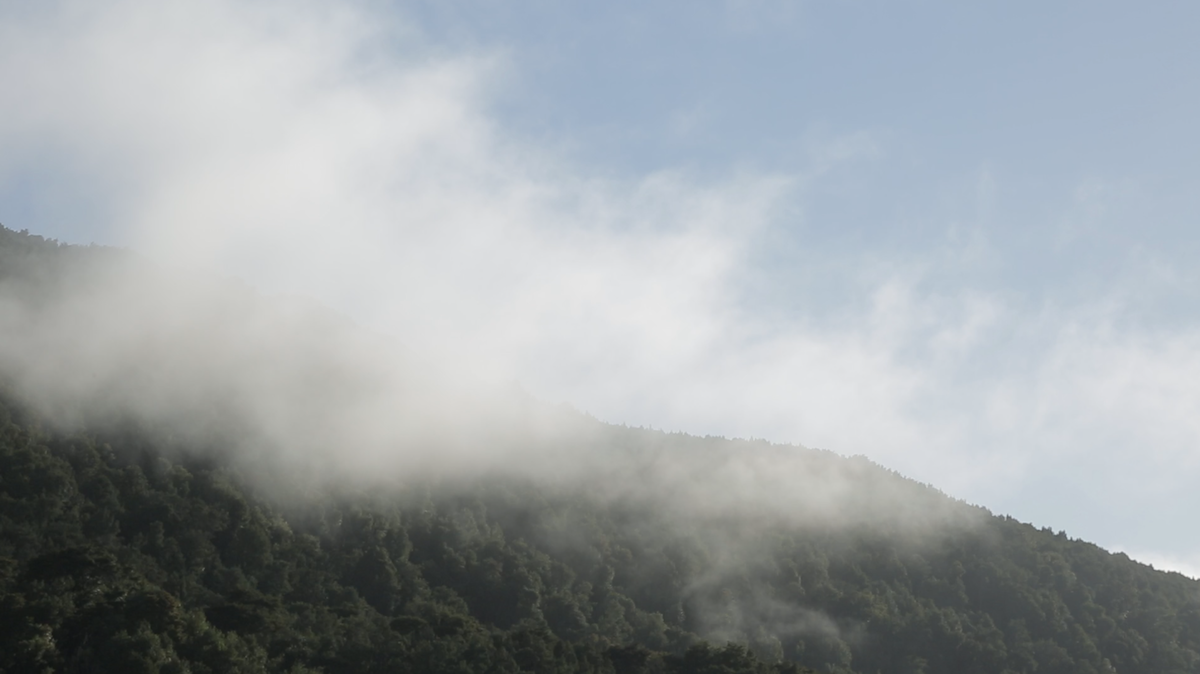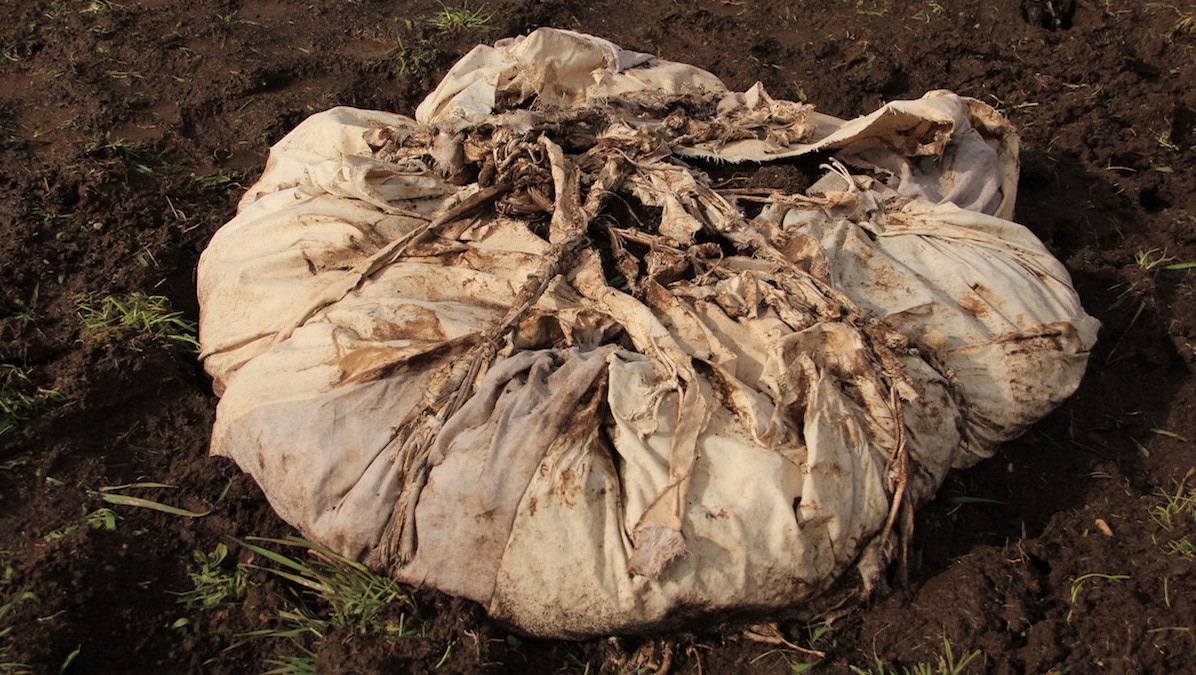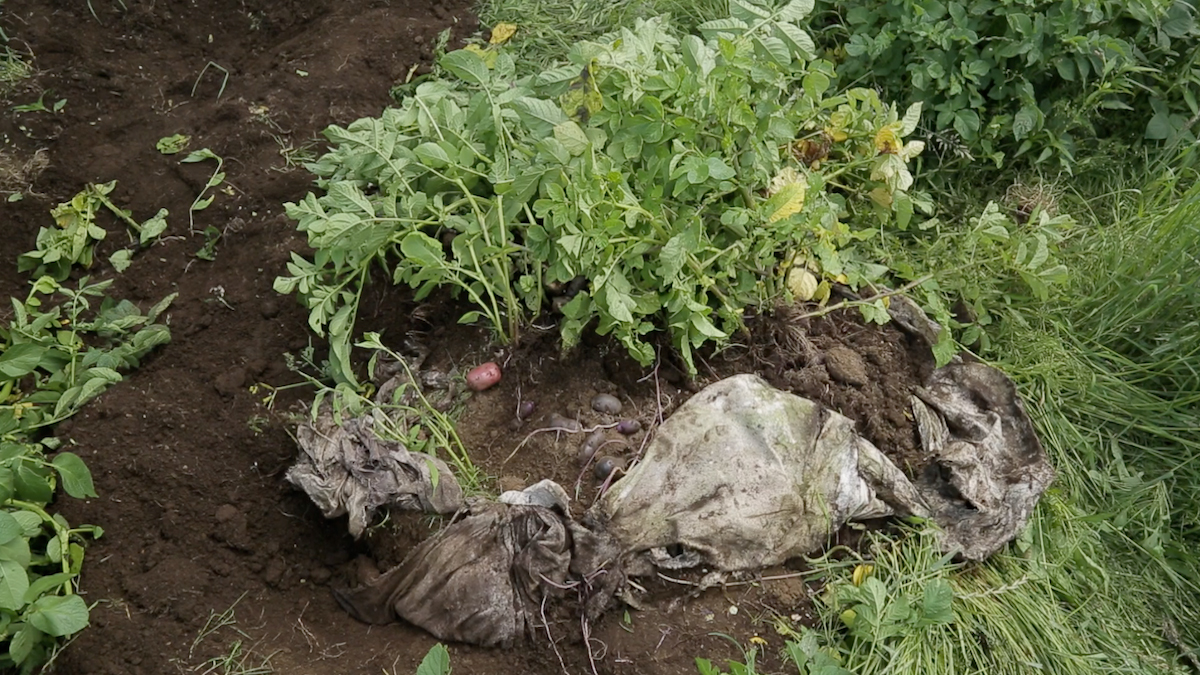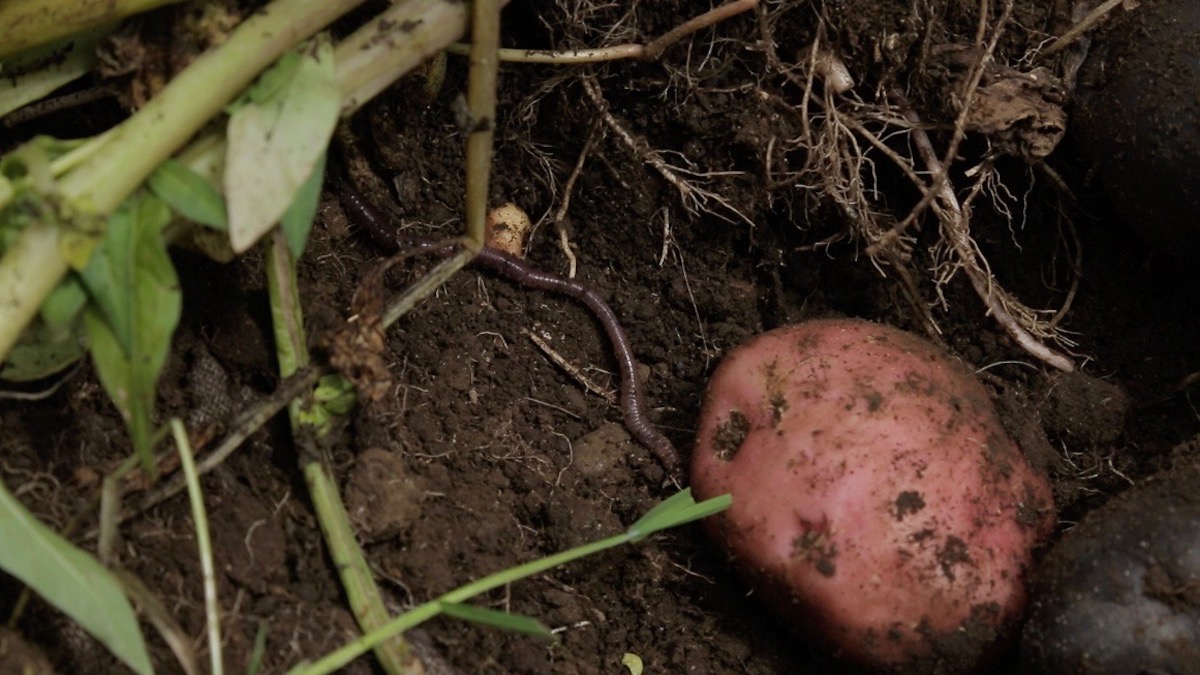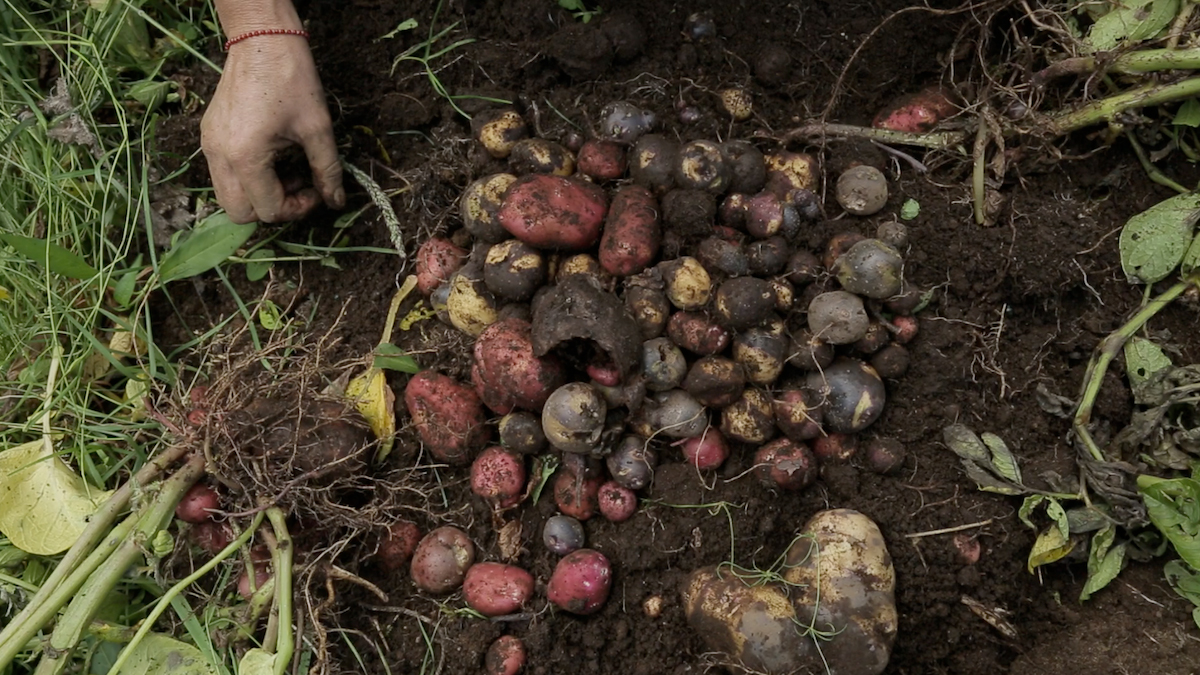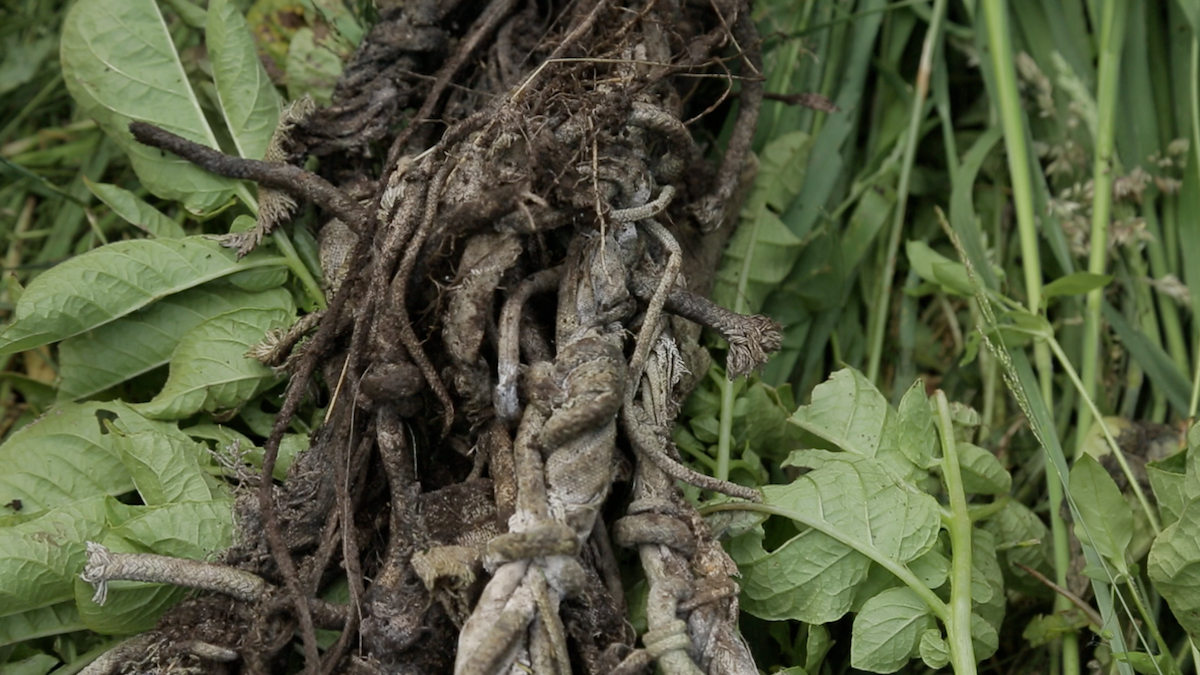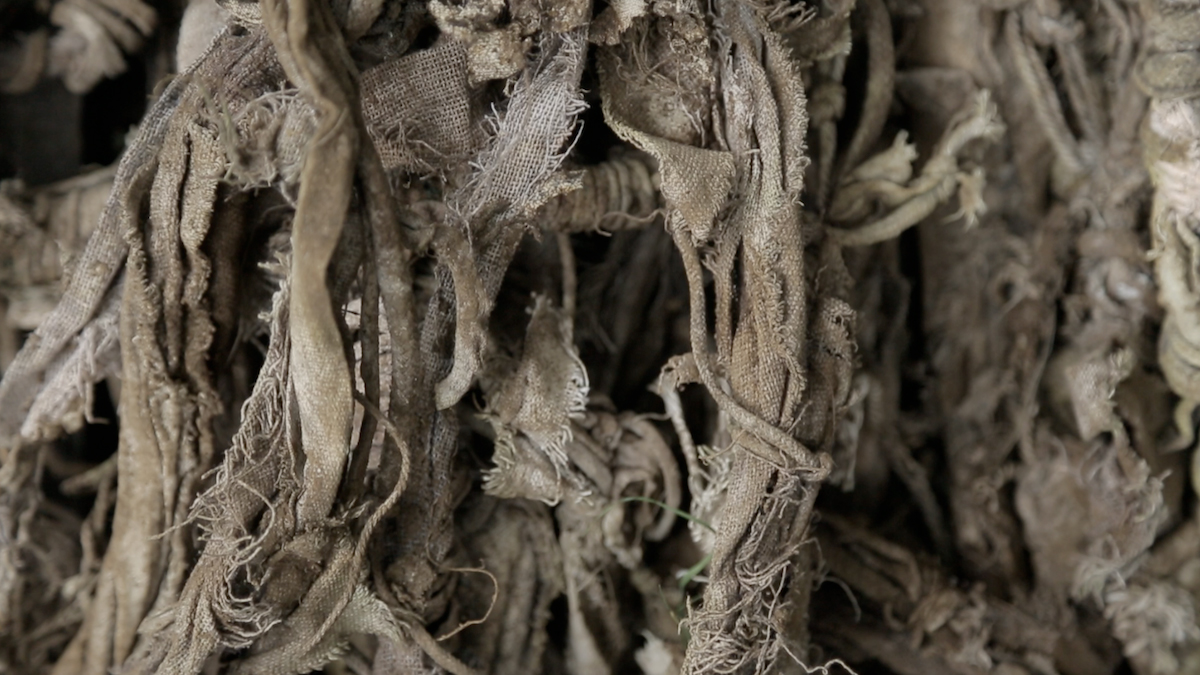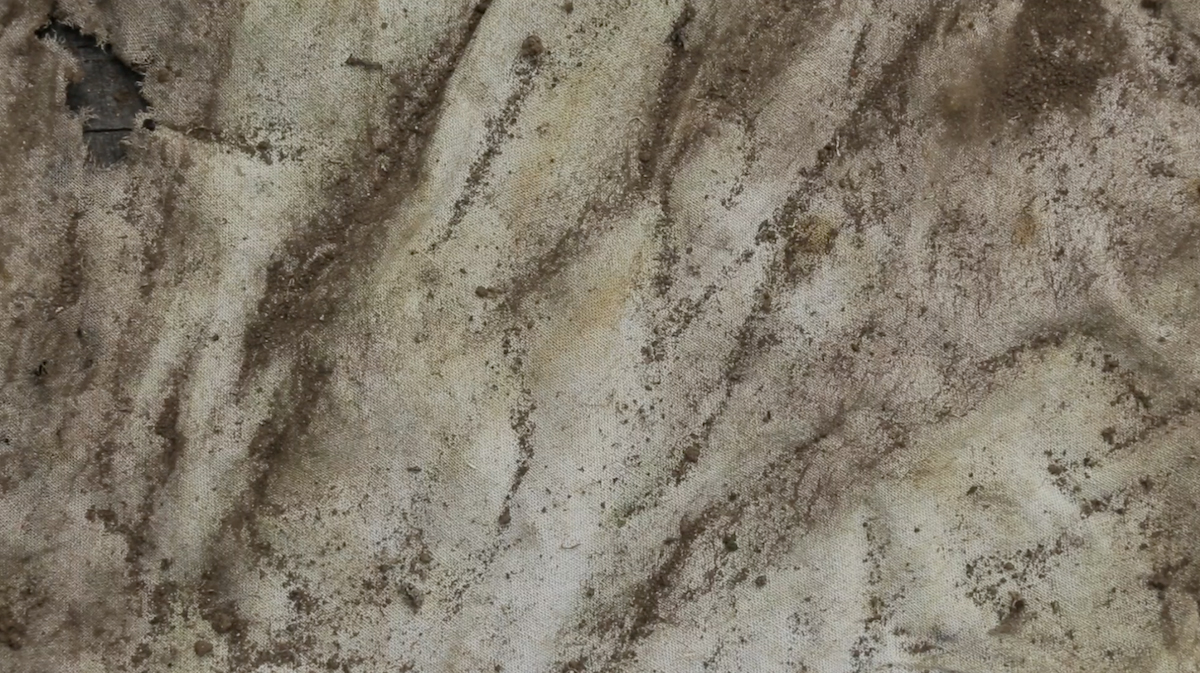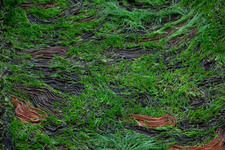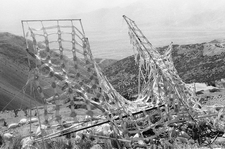Sembrar y cosechar
Isla Grande de Chiloé, región de Los Lagos, Chile
Septiembre 2018 - Febrero 2019
Desde septiembre del 2018 hasta principios del 2019, alejada de los centros urbanos, de instituciones y turistas, Paula de Solminihac concibió un proceso de siembra y cosecha de papas en un modo poco convencional. En esta acción de arte, la artista vuelve a arriesgarse por una intervención casi invisible donde no hay principio ni final, puesto que todo es parte de una amplia obra colaborativa y en cierto grado azarosa. A pesar de lo incalculable, en esta oportunidad la cosecha resultó ser fructífera. Una increíble variedad de papas crecieron a través del lino y una gran cantidad de tela a punto de degradarse fue rescatada como evidencia de un proceso colaborativo entre todos los integrantes del suelo, manos, herramientas y los materiales introducidos. Las telas quedaron teñidas por los colores de las papas chilotas, por el verde de las raíces y los grises de las secreciones de insectos; referencias de un suceso contextual y extensible a la historia pre-colonial de la papa en el archipiélago de Chiloé. Como si tratara de otro lenguaje por descifrar, estas huellas son indicio de una actividad agrícola de larga data iniciada por chonos y huilliches en la isla y que hoy siguen conservando sus habitantes, quienes a pesar de la sequía y la expansión del monocultivo resisten a la contaminación ambiental (terrestre y marítima) de su territorio.
[ENG]
Isla Grande of Chiloé, Los Lagos region, Chile
September 2018 - February 2019
From September 2018 to the beginning of 2019, away from urban centers, institutions and tourists, Paula de Solminihac conceived a process of planting and harvesting potatoes in an unconventional way. In this art action, the artist once again takes the risk of an almost invisible intervention where there is no beginning or end, since everything is part of a broad collaborative and, to some degree, random work. Despite the incalculable, this time the harvest proved to be fruitful. An incredible variety of potatoes grew through the linen and a large amount of cloth about to break down was rescued as evidence of a collaborative process among all the members of the soil, hands, tools and the materials introduced. The fabrics were dyed by the colors of the Chilota potatoes, by the green of the roots and the gray of the secretions of insects; references of a contextual and extensible event to the pre-colonial history of the potato in the Chiloé archipelago. As another language to decipher, these traces are indicative of a long-standing agricultural activity initiated by chonos and huilliches on the island and that are still preserved by their inhabitants, who, despite the drought and the expansion of monoculture, resist the environmental pollution (terrestrial and maritime) of its territory.
Créditos imágenes: Rafael Guendelman, fotogramas de su trabajo audiovisual (2019) junto a Paula de Solminihac.
